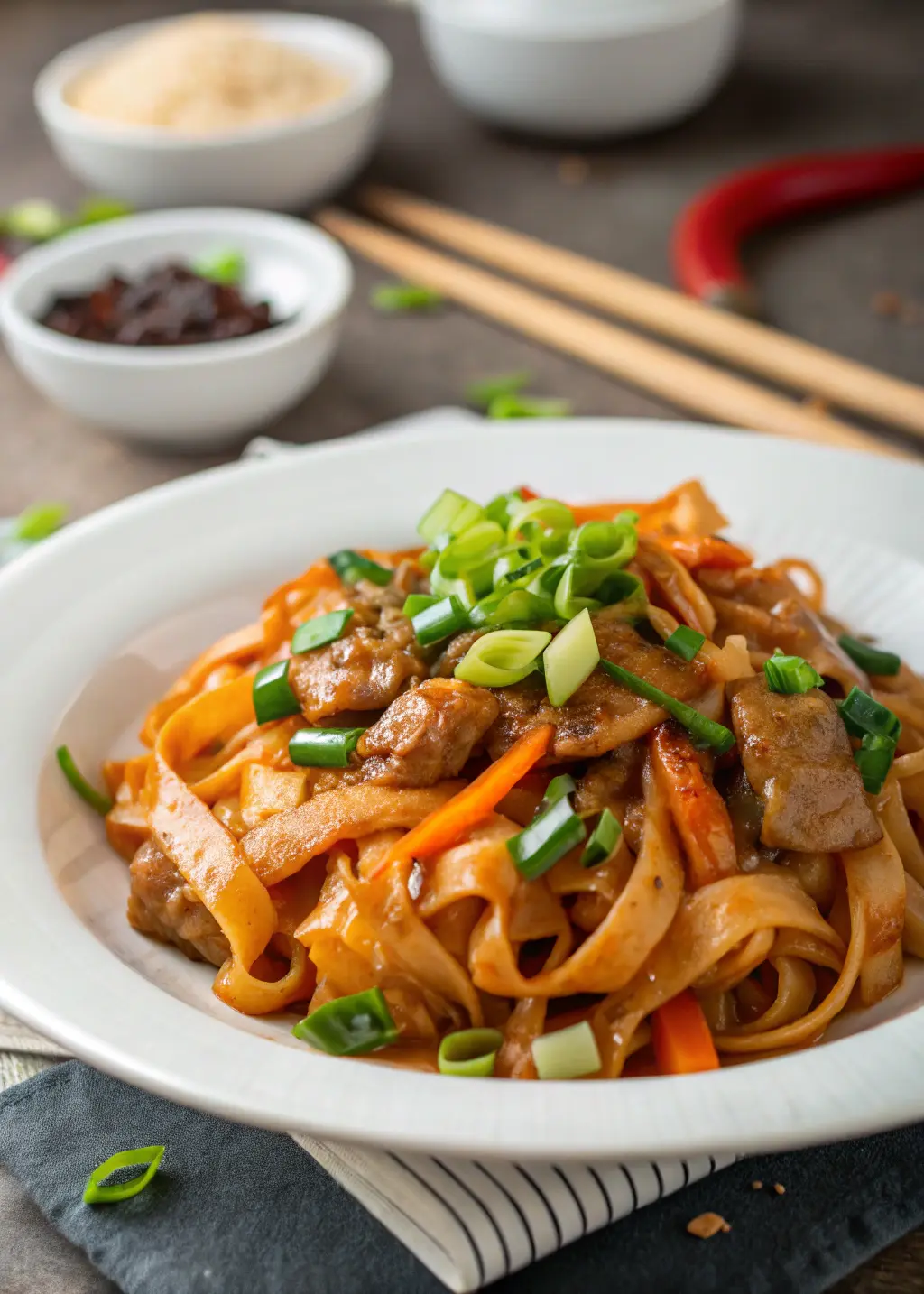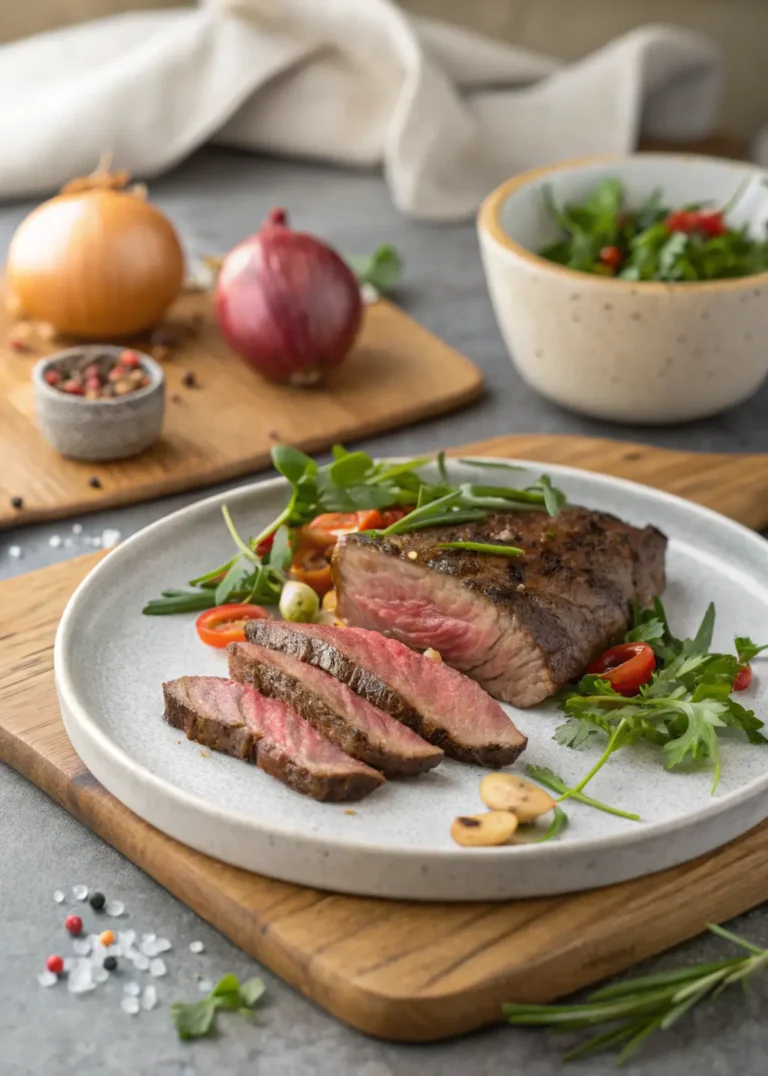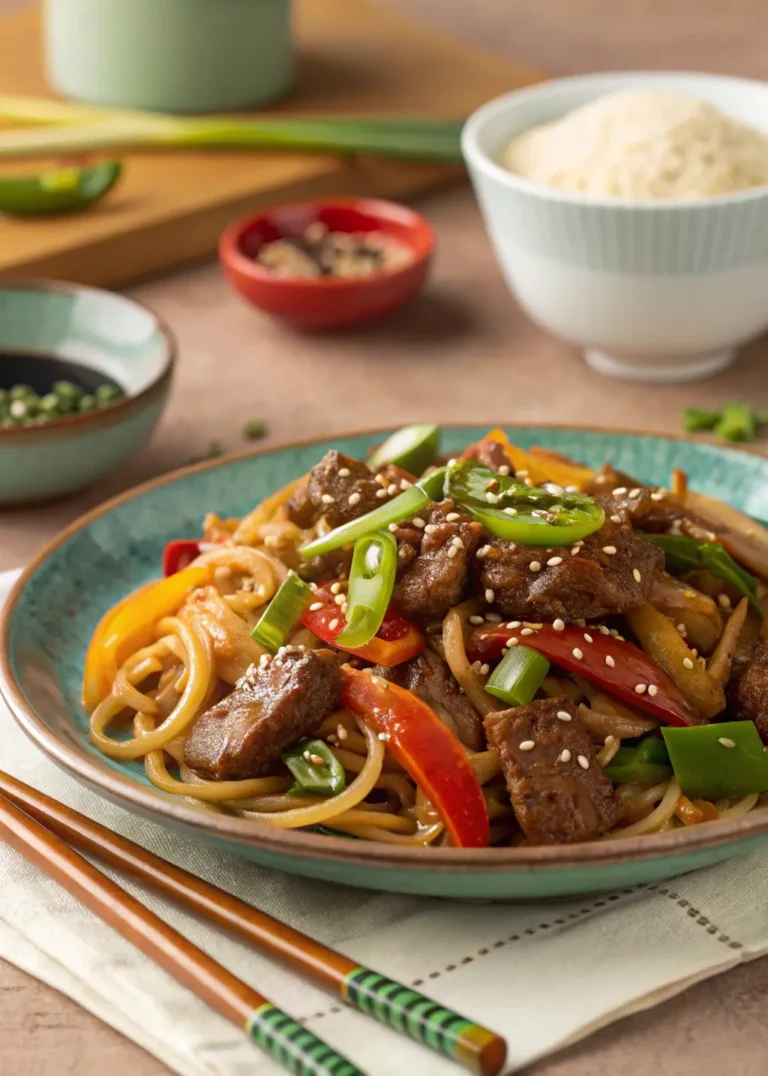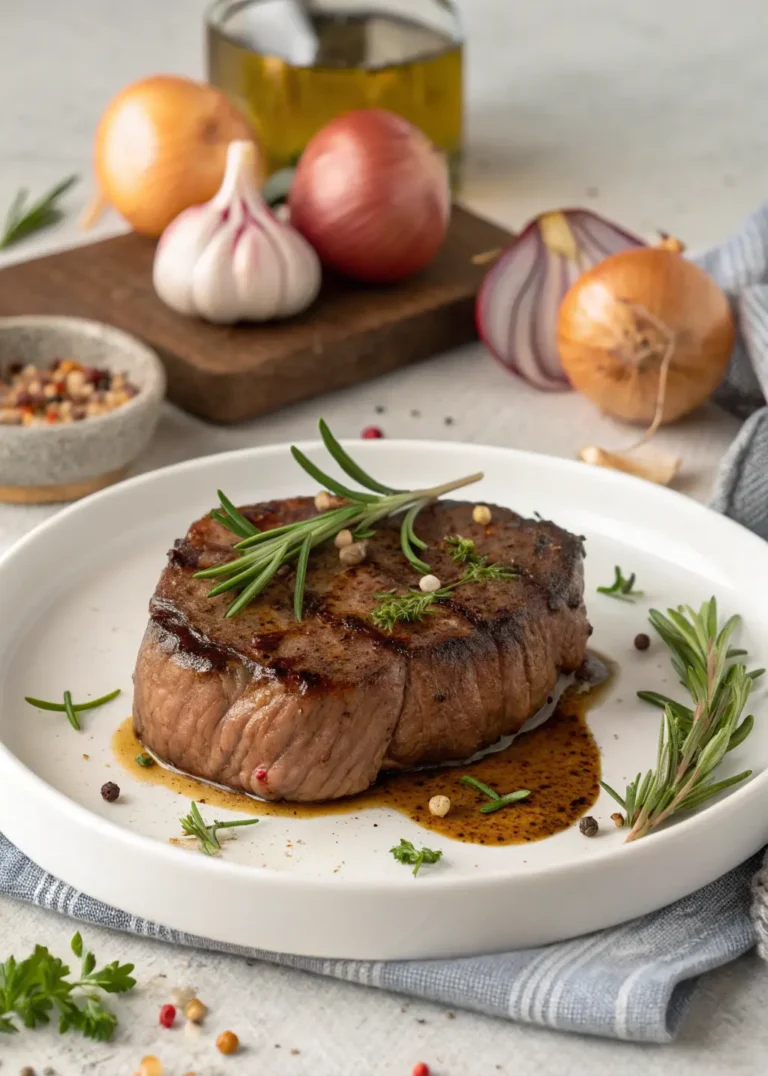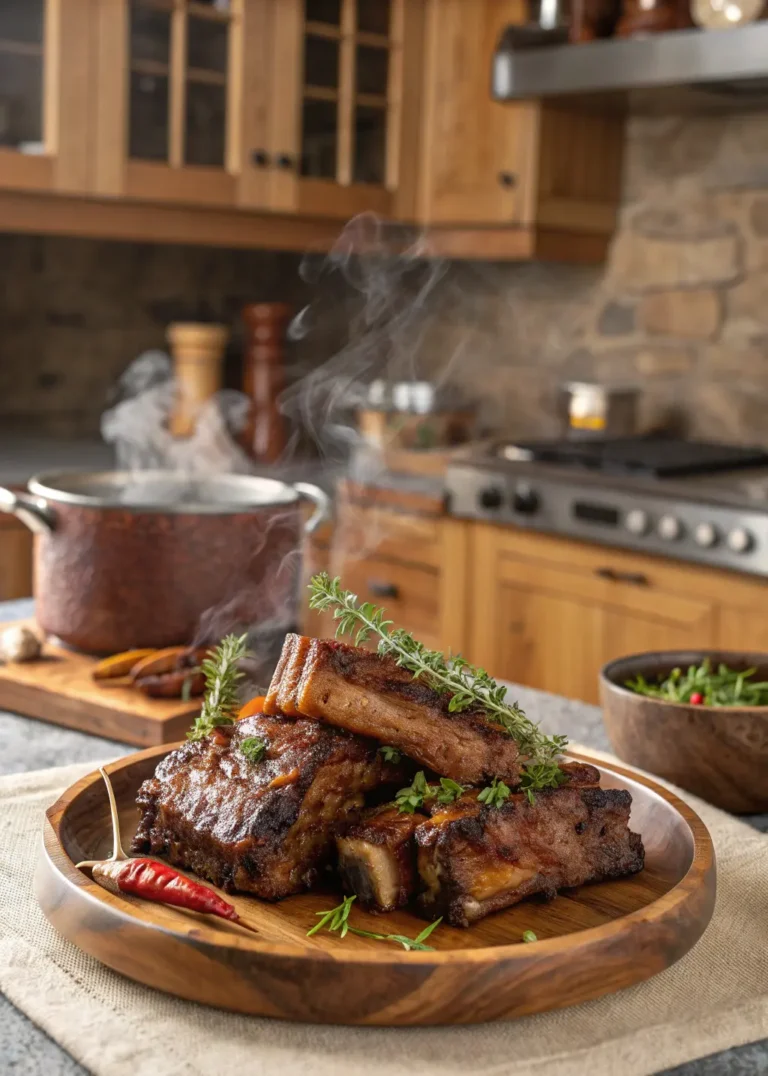Chow Fun: How to Make This Classic Cantonese Noodle Dish at Home
Picture yourself standing beside a bustling street vendor in Hong Kong, watching steam rise from a blazing wok as silky rice noodles dance with tender beef strips. The intoxicating aroma fills your senses – garlic, soy sauce, and that unmistakable smoky essence that only comes from true wok cooking. This is Chow Fun, and today you’ll master this beloved Cantonese treasure without leaving your kitchen.
Your journey into authentic Chinese cooking starts here, where simple ingredients transform into something extraordinary through technique, timing, and tradition.
Table of contents
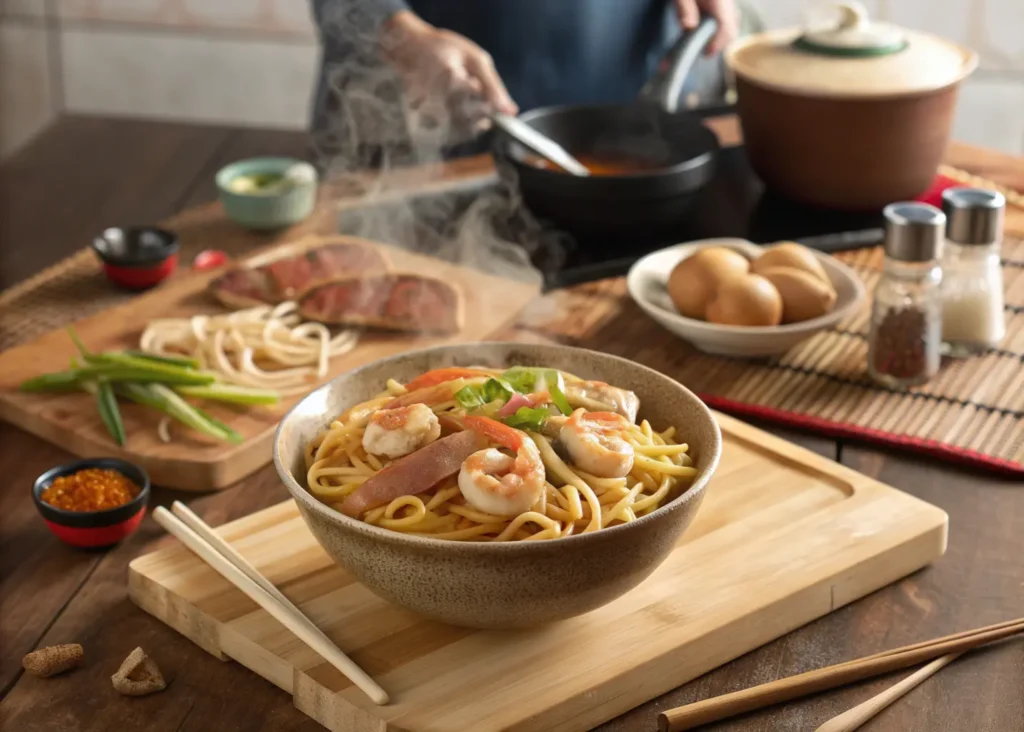
What Makes Chow Fun Special?
Chow Fun stands apart from other stir-fried noodle dishes through its distinctive characteristics. The name literally translates to “stir-fried noodles” in Cantonese, but this simple description barely captures its essence.
Unlike thin lo mein or crispy chow mein, Chow Fun features wide, flat rice noodles called “ho fun” or “he fen.” These silky ribbons create the dish’s signature texture – tender yet slightly chewy, with an ability to absorb flavors while maintaining their integrity under high heat.
The magic happens when these noodles meet “wok hei” – literally “breath of the wok.” This smoky, almost indefinable flavor only emerges from proper high-heat cooking in a well-seasoned wok. It’s what separates restaurant-quality dishes from home attempts.
Essential Ingredients for Authentic Chow Fun
Success begins with selecting the right components. Your ingredient list remains surprisingly short, but quality matters tremendously.
Primary Ingredients
| Component | Quantity (Serves 4) | Notes |
|---|---|---|
| Fresh wide rice noodles | 1 lb (450g) | Look for ho fun noodles |
| Beef sirloin, sliced thin | 8 oz (225g) | Cut against the grain |
| Fresh bean sprouts | 2 cups | Crisp texture essential |
| Scallions | 4 stalks | Cut into 2-inch pieces |
| Garlic cloves | 3 pieces | Minced fine |
| Fresh ginger | 1-inch piece | Minced |
Sauce Components
| Ingredient | Amount | Purpose |
|---|---|---|
| Light soy sauce | 3 tablespoons | Base flavor |
| Dark soy sauce | 1 tablespoon | Color and depth |
| Oyster sauce | 2 tablespoons | Umami richness |
| Shaoxing wine | 1 tablespoon | Aromatic complexity |
| Sugar | 1/2 teaspoon | Balance |
| White pepper | 1/4 teaspoon | Subtle heat |
Finding fresh rice noodles might require a trip to your local Asian grocery store. These noodles typically come refrigerated, often made fresh daily. If unavailable, dried rice noodles work after proper soaking, though the texture differs slightly.
Step-by-Step Chow Fun Mastery
Your success depends on preparation and speed. Once cooking begins, everything happens quickly.
Preparation Phase
Start by marinating your beef. Slice it against the grain into thin strips, then combine with one teaspoon light soy sauce, half a teaspoon cornstarch, and half a teaspoon oil. Allow this to rest for fifteen minutes while you prepare other components.
Separate your fresh rice noodles carefully – they tear easily when cold. If using dried noodles, soak them in warm water until pliable but still firm.
Mix your sauce ingredients in a small bowl. Having everything measured and ready prevents panic during the fast-paced cooking process.

The Cooking Process
Heat your wok or largest skillet over the highest heat your stove allows. The pan should be smoking before you add any oil – this indicates proper temperature for achieving wok hei.
Step 1: Cook the Protein Add one tablespoon oil and swirl to coat the surface. Immediately add your marinated beef in a single layer. Resist the urge to stir for sixty seconds – this allows proper searing. Then stir-fry until just cooked through, about two minutes total. Remove and set aside.
Step 2: Master the Noodles Add another tablespoon of oil to your wok. Add minced garlic and ginger, stirring for ten seconds until fragrant. Add your rice noodles and gently separate them using your spatula or wooden spoon.
Pour your prepared sauce mixture over the noodles and toss quickly but gently. The noodles should absorb the sauce while developing those characteristic dark and light patches that signal proper technique.
Step 3: Final Assembly Return your cooked beef to the wok along with bean sprouts and scallions. Toss everything together for thirty seconds – just long enough to heat the vegetables while keeping them crisp.
Serve immediately while the wok hei flavor remains at its peak.
Common Challenges and Solutions
Even experienced cooks encounter obstacles when making Chow Fun. Recognizing these issues helps you avoid disappointment.
Mushy Noodles: This usually results from overcooking or using too much liquid. Keep cooking time brief and ensure your wok stays hot throughout the process.
Broken Noodles: Handle fresh rice noodles gently, especially when cold. Allow them to come to room temperature before separating, and use a lifting motion rather than aggressive stirring.
Missing Flavor: Proper seasoning balance requires practice. If your dish tastes flat, you might need more oyster sauce for umami or a touch more dark soy sauce for depth.
Lack of Wok Hei: This smoky essence only develops under extreme heat. Don’t be afraid to let your pan smoke – that’s when the magic happens.
Variations Worth Exploring
Once you’ve mastered the basic technique, experimentation becomes rewarding.
Protein Alternatives: Chicken requires slightly longer cooking time, while shrimp cooks in under two minutes. For vegetarian versions, try firm tofu cut into strips and pan-fried until golden.
Vegetable Additions: Chinese broccoli (gai lan) provides traditional authenticity, while snow peas add sweetness and crunch. Mushrooms contribute earthiness, particularly shiitake or king oyster varieties.
Regional Styles: Hong Kong style typically includes more sauce, creating a “wet” version, while Guangzhou preparation stays drier with emphasis on noodle texture.
Storage and Reheating Tips
Chow Fun tastes best fresh, but leftovers can work with proper handling.
Store refrigerated portions for maximum two days in airtight containers. When reheating, your best option involves returning the noodles to a hot wok with a splash of water or broth. This revives the texture better than microwave heating, which tends to make noodles gummy.

Frequently Asked Questions
Can I make Chow Fun without a wok? Yes, though results differ slightly. Use your largest, heaviest skillet and maintain the highest possible heat. Work in smaller batches if necessary to avoid overcrowding.
What’s the secret to restaurant-quality Chow Fun at home? Temperature control makes the biggest difference. Your cooking surface must be screaming hot, and you must work quickly. Don’t second-guess the process – confidence in your technique shows in the final dish.
Where do I find authentic rice noodles? Asian grocery stores stock fresh varieties, usually in refrigerated sections. Many stores make them daily. Online suppliers offer dried alternatives if fresh noodles remain unavailable in your area.
Your Chow Fun Journey Begins Now
Mastering Chow Fun connects you to centuries of Cantonese culinary tradition while developing skills that extend far beyond this single dish. The high-heat techniques, timing precision, and ingredient balance you’ll learn here apply to countless stir-fry preparations.
Your first attempt might not achieve perfection, but each effort builds understanding. Professional chefs spend years mastering wok cooking – approach this as a journey rather than a destination.
The beauty of Chow Fun lies not just in its flavors, but in the satisfaction of creating something truly special from simple ingredients. When you achieve that perfect balance of silky noodles, tender protein, and crisp vegetables all unified by that elusive wok hei, you’ll understand why this dish has captured hearts across generations.
Ready to start your Chow Fun adventure? Gather your ingredients, fire up that wok, and prepare to experience the magic of authentic Cantonese cooking. Your kitchen is about to smell like the best Hong Kong street stall, and your family will wonder when you became such an accomplished chef. The secret will be your newfound mastery of this timeless classic.
Have you given our recipe a try?
There are no reviews yet. Be the first one to write one.

